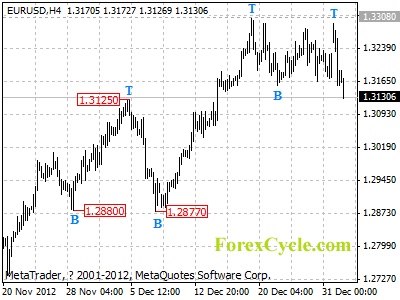The following is an excerpt from Sizemore Capital’s Letter to Investors. The full PDF version can be downloaded here.
You can breathe now. 2012 has passed, and the world didn’t end. And in fact, 2012 proved to be an excellent year for Sizemore Capital investors. I am proud to announce that all of our model portfolios ended the year positive, and three of the four matched or outperformed the S&P 500. In another year dominated by political risk and policy-driven “risk on / risk off” volatility, that is something to celebrate.
Our newly-launched Dividend Growth Portfolio (started in March) performed as expected, returning 5.3% vs. 1.6% for the S&P 500 over the same period. And this brings me to an important point about 2012: virtually all of the returns for most investors happened in the first quarter. Stripping out the monster run that U.S. stocks enjoyed from January to March of last year, the major stock market averages barely broke even.
Investors should take heed of this fact, because history may be repeating itself in 2013. Optimism over the Fiscal Cliff resolution lit a fire under the world’s equity markets in the first day of trading in January. But unfortunately, we still have a long year of political wrangling in front of us, with all of the uncertainty and market volatility this promises.
Sizemore Capital continues to take an “income first” approach in this environment. I expect to see the market rise in 2013, but I also expect it to be choppy and trendless for long stretches of time. And in a sideways market, you can only make money in one of two ways: 1). Generating current income from dividends and interest, or 2). Actively trading, buying low and selling high. I intend to employ both strategies in 2013, but I consider income to be the more reliable of the two.
Sizemore Capital takes an international approach to investing, and this was a mixed bag for us in 2012. I proved to be too early in aggressively buying Europe in the first and second quarters of the year. This hurt Sizemore Capital’s portfolio returns in the first half of the year, though it contributed to their strong performance in the second half of the year, particularly for the Sizemore Investment Letter Portfolio.
At time of writing, I continue to believe that the best values in the world at current prices are in European blue chips with strong business exposure to emerging market consumers and in emerging market equities themselves. I consider these areas to be the proverbial “low-hanging fruit,” and these will likely be a focus for Sizemore Capital through at least the first quarter of 2013.
Finally, I have an announcement to make. After winning the InvestorPlace Best Stocks contest in 2011 with my selection of Visa Inc (NYSE:$V), I was runner up in the 2012 contest with a 37% return in my selection of Turkcell (NYSE: $TKC). I was actually in the lead for much of December and even held the lead into the final hour of trading on December 31. Alas, TheStreet.com’s Philip VanDoorn came from behind to beat me in the closing minutes with a late surge in the price of his selection, CapitalOne (NYSE:$COF). CapitalOne finished the year with a 38% return. My congratulations to Philip on an excellent investment choice, and I look forward to the rematch.
My selection for the 2013 contest is Mercedes-Benz maker Daimler AG (OTC:DDAIF). Turkcell and Daimler are both current holdings of the Sizemore Investment Letter Portfolio, and Visa was formerly a holding.
Looking forward to another great year,
Charles Lewis Sizemore, CFA
The post Sizemore Capital’s 2012 Year End Letter to Investors appeared first on Sizemore Insights.








